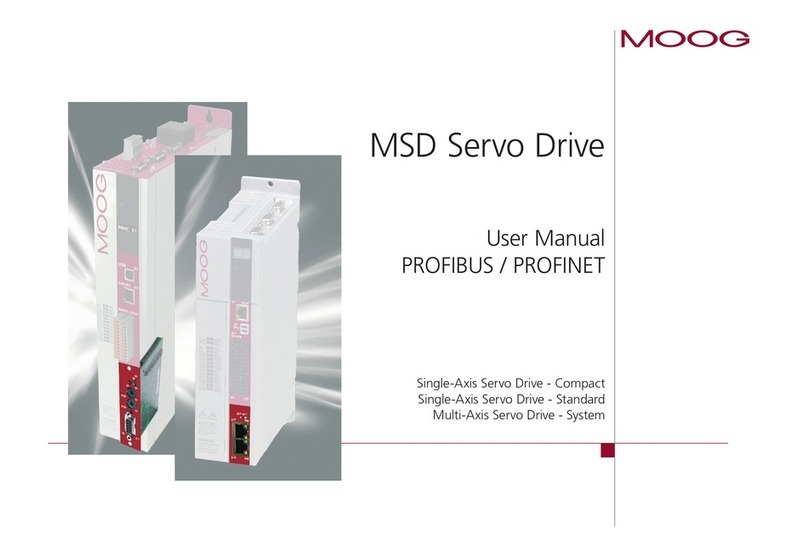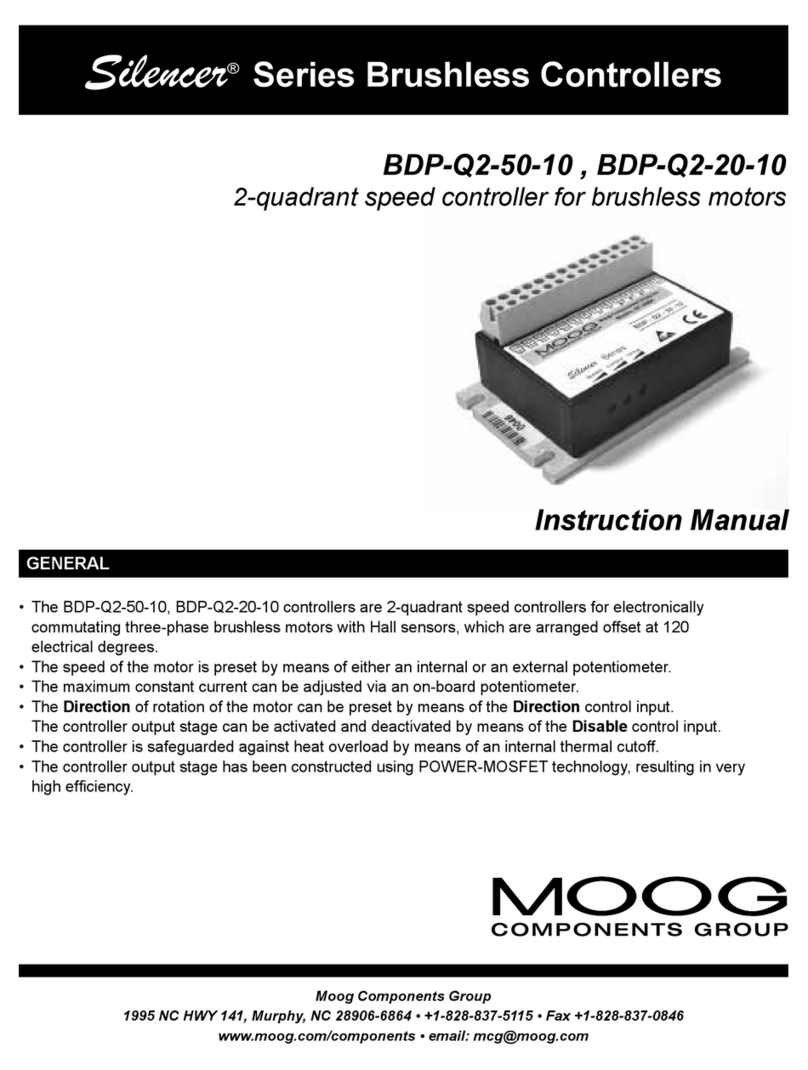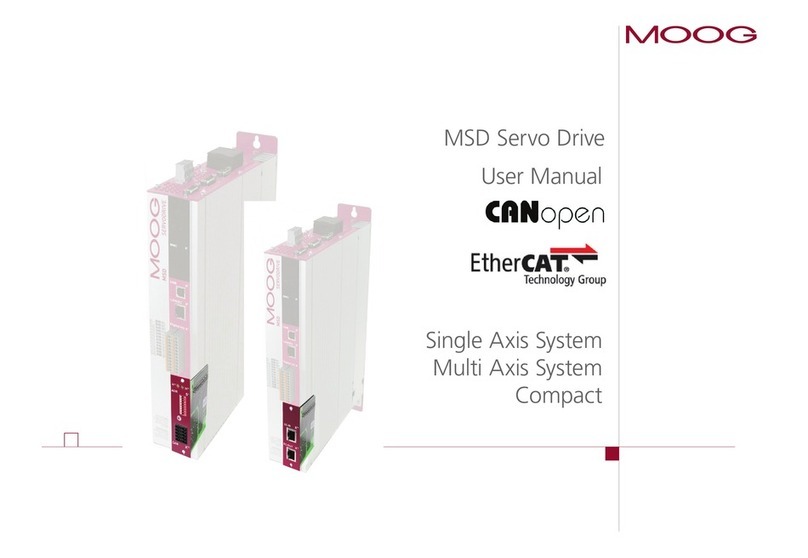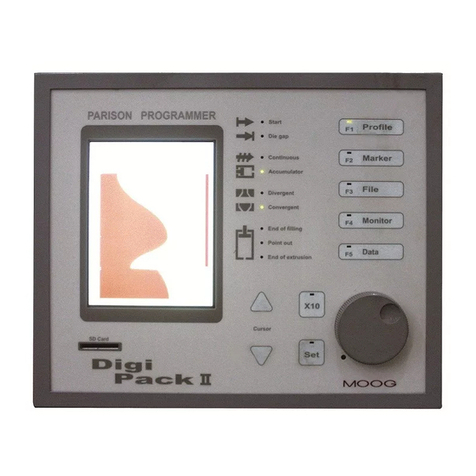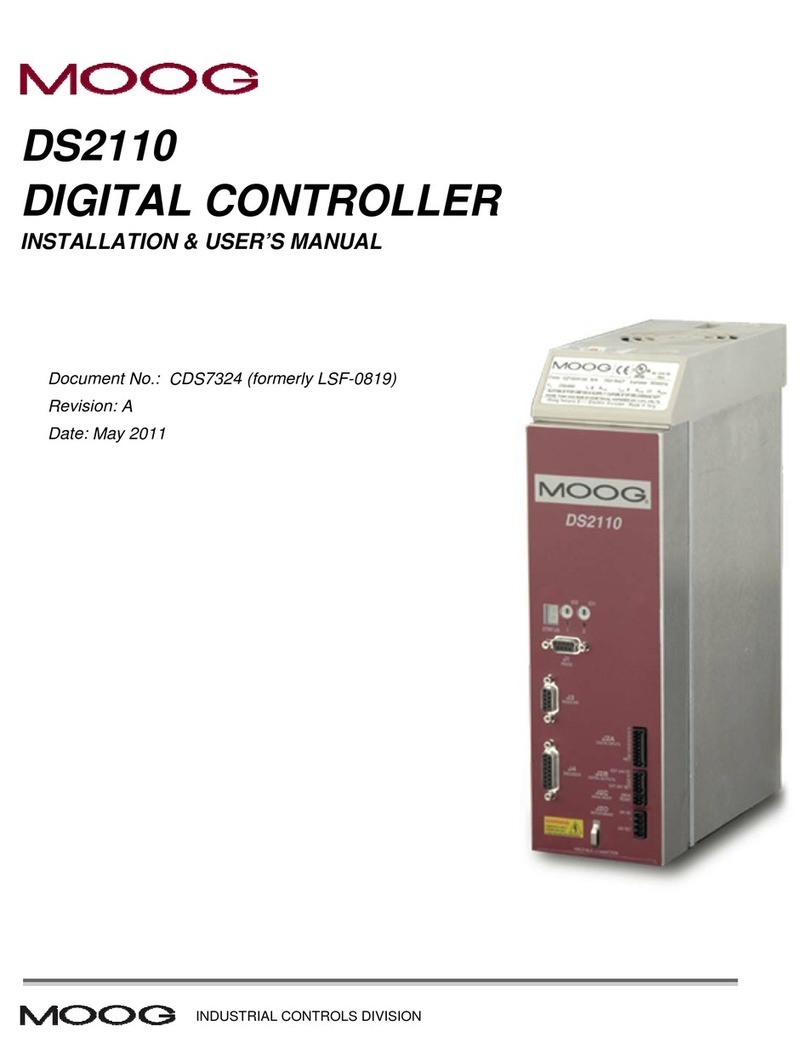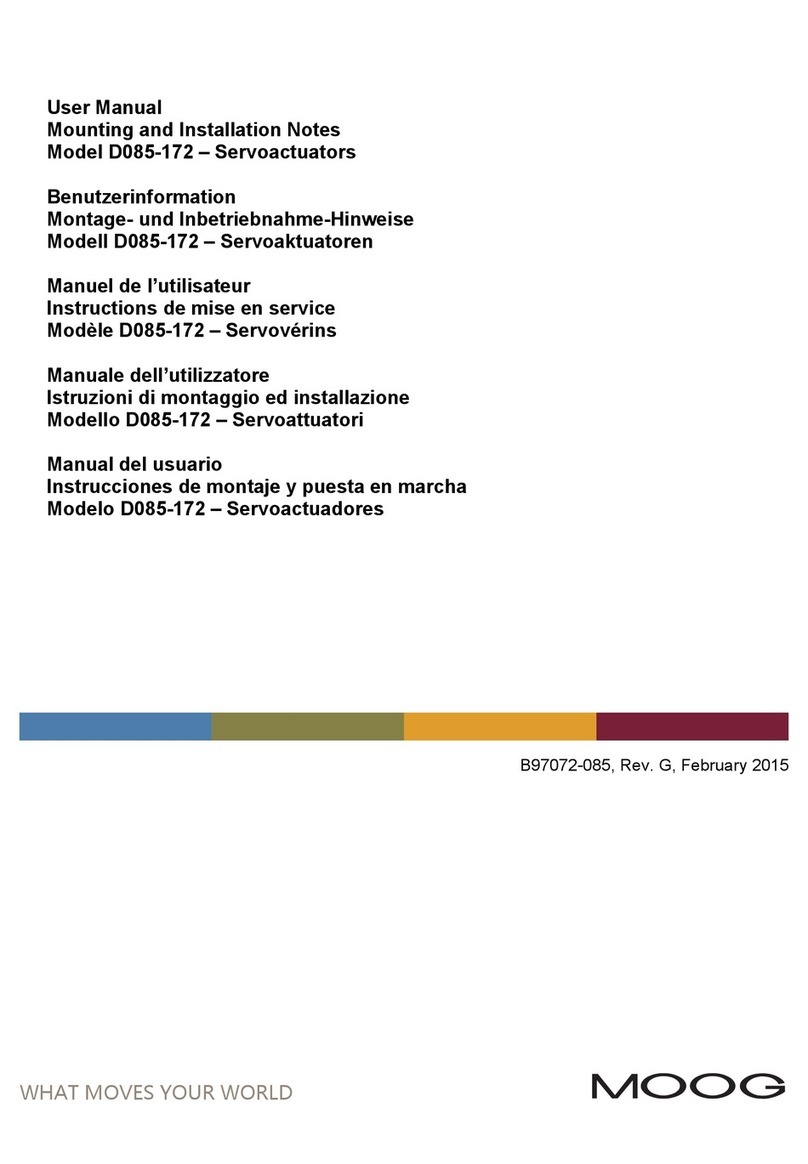
© MOOG 2019
This document is subject to MOOG INTELLECTUALAND PROPRIETARY INFORMATION LEGEND . The details are on page II.
Table of Figure
Figure 1-1 DigiPackⅢappearance - - - - - - Page 2
Figure 1-2 Basic Continuous Blow Molding Machine Control Diagram- - - Page 3
Figure 1-3 Basic Accumulator Machine Control Diagram- - - - Page 4
Figure 1-4 Start up Display- - - - - - - Page 6
Figure 1-5 Die Gap Tooling Actuator Installation - - - - Page 10
Figure 1-6 Die Gap Tooling Actuator- - - - - - Page 10
Figure 1-7 Actuator –Die Gap Tooling Mechanical Adjustment - - - Page 11
Figure 1-8 Tooling Adjustment Mechanism - - - - - Page 11
Figure 1-9 Typical Cylinder Installation - - - - - Page 12
Figure 1-10 G631-XXX Servovalve - - - - - - Page 13
Figure 1-11 Typical Linear Potentiometer - - - - - Page 14
Figure 1-12 LWHxxx Potentiometer Installation- - - - - Page 14
Figure 1-13 High Pressure Filter - - - - - - Page 15
Figure 1-14 Hydraulic Power Supply - - - - - Page 16
Figure 1-15 Flow Pressure Filter - - - - - - Page 17
Figure 1-16 REAR CONNECTOR - - - - - - Page 18
Figure 1-17 DigiPackⅢInstallation Drawing - - - - - Page 20
Figure 1-18 ServoValve and Transducer Phasing- - - - - Page 21
Figure 1-19 TB-1 Connections - - - - - - Page 21
Figure 1-20 TB-1 Functions - - - - - - Page 22
Figure 1-21 TB-2 Connection - - - - - - Page 23
Figure 1-22 TB-2 Connection - - - - - - Page 23
Figure 1-23 TB-2 Functions - - - - - - Page 24
Figure 1-24 Input use external Power supply - - - - - Page 25
Figure 1-25 Input use internal Power supply - - - - - Page 25
Figure 1-26 Output use external Power supply - - - - Page 25
Figure 1-27 Output use internal Power supply- - - - - Page 25
Figure 1-28 Power supply Connections - - - - - Page 26
Figure 1-29 Accumulator Machine Timing chart - - - - Page 27
Figure 1-30 Continuous Machine Timing chart - - - - Page 28
Figure 1-31 Touch screen Calibration - - - - - Page 29
Figure 1-32 Touch screen calibration display - - - - - Page 29
Figure 1-33 DigiPackⅢFlont panel - - - - - - Page 30
Figure 1-34 Machine setup display (SHIFT→F4) - - - - Page 33
Figure 1-35 Machine setting Functions - - - - - Page 33
Figure 1-36 Example of profile points change- - - - - Page 34
Figure 1-37 Setup screen - - - - - - - Page 35
Figure 1-38 Die Converge/Diverge Setup- - - - - - Page 35
Figure 1-39 Die Gap Setup- - - - - - - Page 36
Figure 1-40 DCDT Noise Filter - - - - - - Page 36
Figure 1-41 Die Gap Span Setting - - - - - - Page 37
Figure 1-42 Back - - - - - - - - Page 38
Figure 1-43 Gain select - - - - - - - Page 39
Figure 1-44 Gain setting - - - - - - - Page 39
Figure 1-45 Accumulator Setup - - - - - - Page 40
Figure 1-46 EMPTYAccumulator Set Up - - - - - Page 40
Figure 1-47 FULL Accumulator Set Up - - - - - Page 41
Figure 1-48 Extrusion Fixed- - - - - - - Page 41
Figure 1-49 Filling Fixed - - - - - - - Page 41
Figure 1-50 Accumulator setting (Back) - - - - - Page 42
